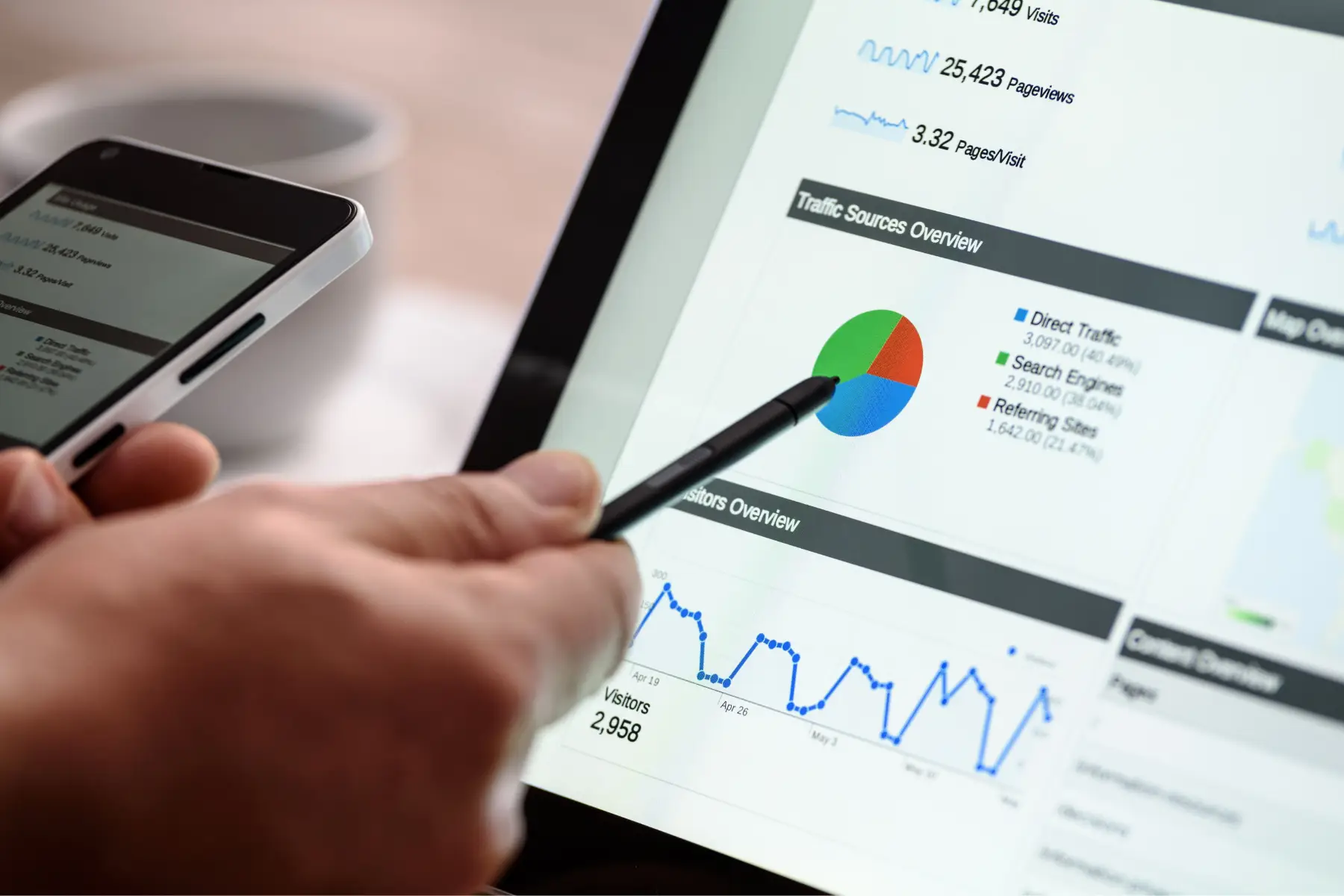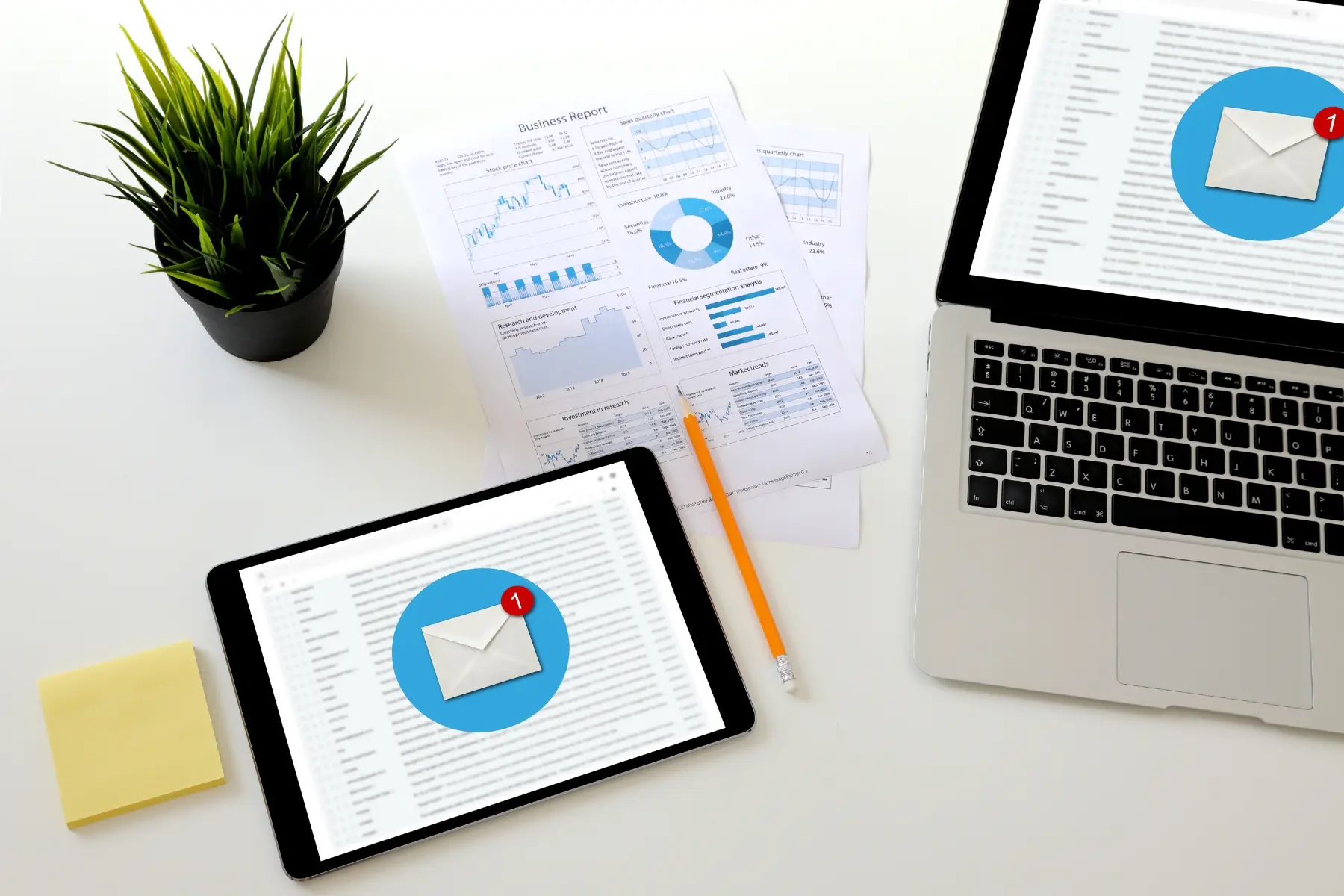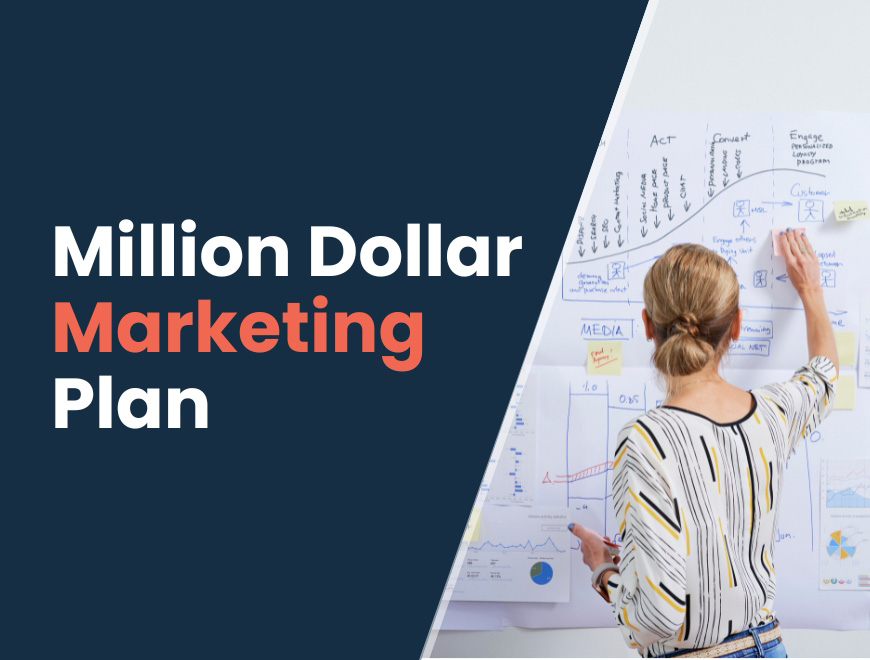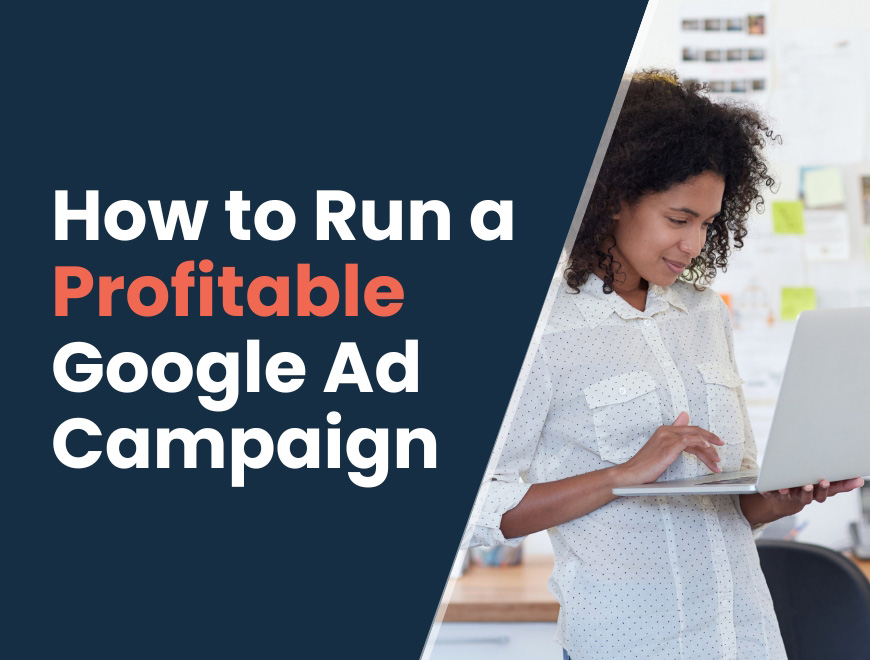How to Get Started Using Digital Marketing
Online growth is both a science and an art form. Getting started can feel overwhelming. Over the years, I’ve driven thousands of successful marketing campaigns, and this is my advice on getting started. I’ve distilled down what I see as the best approach to kicking off a marketing strategy for a small business that wants to grow and scale if you’ve never done any marketing in the past.
If you are a business owner ready to grow and scale your company using digital marketing but are unsure how to get started, start here.
Understand the Marketing Landscape Before Diving In
The marketing landscape has evolved significantly. Still, the fundamentals and psychology behind it remain consistent. While media and platforms have changed, the principles of marketing have not.
Often, businesses come to me without a marketing plan, or they’ve never done any marketing. That’s because lots of businesses start almost by accident. Someone asks them to do something, or they figure out a way to do something someone will give them money for, and they go from there.
What usually happens from here is the business will grow based on word-of-mouth referrals. “Hey, I heard you did this for my friend, can you do it for me?”
Word of mouth works for a while, but most businesses hit a wall from here. They want to grow, to scale, and their systems are down pat. They can now deliver the product and services efficiently and profitably and want to take the business to the next level. But up until that point, that growth has been primarily from referrals and word of mouth.
Getting Started – From Word Of Mouth To An Online Digital Marketing Plan
We know that most businesses start organically and rely on word-of-mouth referrals, to begin with. This initial growth is crucial, but eventually, you’ll want to take your business to the next level.
So the question is then, where to from here? What’s the next step?
It’s marketing. But even when they know this, most business owners don’t know where to start.
‘In my experience, the best place to start is with the people already looking to purchase your products and services. It sounds obvious, but it’s an important consideration for your digital marketing approach.’
While marketing fundamentals haven’t changed much, the media, tools and platforms have.
Pre-internet, if you wanted to reach your target audience, you either ran a yellow pages ad to target a buyer while they were searching or interrupted them through radio, TV, newspaper, print, direct mail, or even door-to-door. Today, the same concepts still apply.
You’ve still got people searching. You can still interrupt people to tell them about your products and services. But how do you do that online? Ideally, it’s great to start with the people already searching for what you offer.
Why? Because they are further down the buying cycle.

Understanding Buyer Behaviour Is Crucial To Identify Your Ideal Customers
When you think about how people buy products and services, they’re typically at one of four stages, which are:
- Not aware that they have a problem, which means they’re not doing anything about trying to solve that problem.
- They’re aware that they have a problem, but they’re not actively doing anything to solve their problem.
- They may be in consideration mode. They know they have a problem and are actively taking steps to solve it. They are searching online, trying to understand the solutions available to solve the problem.
- Last of all, they may be at the decision stage. This is when they know the problem and the solutions out there. They just need to find somebody to do business with.
Narrowing Your Focus – Targeting The Right Audience for Optimal Results
My experience has shown that targeting potential buyers already in the consideration or decision stage is the best approach. These individuals are actively searching for solutions or vendors to buy from, making them easier to convert. When clients approach us for help scaling their business, we almost always recommend starting with search engine marketing, specifically Google Ads.
Google Ads provides a quick and efficient way to reach potential customers actively searching for products or services like yours. Setting up a Google Ads campaign allows your ad to appear at the top of relevant search results within an hour. While Google Ads may be slightly more expensive due to combined campaign management costs and ad fees, its effectiveness in reaching potential customers is unparalleled.
A common mistake we see is running overly broad Google Ads campaigns with generic keywords, such as “lawyers” for a legal service. To achieve better results, it’s crucial to understand keyword targeting, including intent, broad, phrase, and exact match. This ensures that your ads are displayed to the most relevant audience, increasing the chances of conversion.
In parallel, optimising your website to convert visitors into customers effectively is essential. A homepage may not be sufficient for this purpose, especially for service-based companies like lawyers. Instead, we recommend creating dedicated landing pages with direct response copy that clearly communicates your product or service’s value proposition and guides visitors through the buying journey.
‘Landing pages should be designed to sell the next step in the process, such as requesting a free quote, scheduling an initial consultation, or taking other actions that lead to conversion. Understanding your audience’s needs and catering to their journey will improve the website’s conversion rate.’
For product-based businesses, the website should be set up to sell the product directly, whereas service-based companies should focus on selling the next step in the process, such as a free quote or consultation. By aligning the website with the customer’s journey, you increase the chances of converting leads into customers effectively.
By focusing on these key strategies in the initial stages of your marketing journey, your business can lay a solid foundation for future growth and success. Remember to prioritise targeting potential customers in the consideration or decision stage, and leverage the power of Google Ads and optimised landing pages to maximise your marketing efforts.

Beyond Paid Ads – Unlocking the Full Potential of Search Engine Marketing
When starting out with something new, I recommend adopting a focused approach rather than attempting multiple marketing campaigns simultaneously. This will maximise the impact of your marketing efforts.
‘Trying to run several campaigns without honing in on one efficient channel can lead to mediocre results. It’s crucial to concentrate on one marketing channel first, optimising it until it produces satisfactory profits.’
Once your Google Ads campaign performs well and drives quality leads, it’s time to look at organic search engine optimisation (SEO). Ranking high in organic search results is incredibly valuable because it establishes credibility and trust with potential customers. Organic search results are perceived as more genuine, which boosts the chances of attracting qualified leads.
SEO might not yield immediate results like paid ads, but it provides long-term benefits and helps reduce reliance on expensive paid campaigns. With SEO efforts in place, you can maintain a strong online presence, showcasing your business at the top of organic search results for relevant keywords.
Starting with a focused search engine marketing strategy, utilising Google Ads, and optimising the website for conversion is an effective way to kickstart any marketing campaign. Once the foundation is established, complementing it with organic search efforts will unlock the full potential of search engine marketing.
By understanding user intent, targeting the right keywords, and aligning marketing efforts with the customer’s journey, your business can achieve significant growth and success in the digital landscape.
Maximising Organic Search, Multi-Channel Marketing and Lead Nurturing
When I search for something on Google, like “lawyers, Brisbane,” I notice that the top search results are a mix of paid ads, maps, and organic results. Being at the top of the organic search results holds the most credibility because you can’t pay to be there; Google determines the top spot based on relevance to the search query.
According to Google’s data, about 10% of people click on ads, while 90% click on organic search results. In particular, around 30% of all searchers click on the number one organic result. So, focusing on organic search engine optimisation (SEO) is essential to gain trust and credibility with potential customers. This approach offers long-term benefits and reduces reliance on costly paid campaigns.
‘If a thousand people search for lawyers in Brisbane each month, and you rank as the number one organic search result, you can expect around 300 of them to click on your website. They are actively seeking a lawyer in the area and are potential leads for your services. If you can convert 10% of those leads, you’ll have 30 prospects every month, and with a closing rate of one in three, you’ll gain 10 new clients.’
That’s why ranking high in organic search results can be a game-changer for your business’s growth and success. To reach the number one organic search result, focus on SEO strategies such as keyword optimisation, valuable content creation, and earning quality backlinks. You can gradually reduce reliance on costly Google Ads as your organic ranking improves.
Nurturing your leads is essential too, and often overlooked. You can do this through email marketing – collecting email addresses and running engaging campaigns to encourage conversions. A well-rounded SEO, Google Ads, and email marketing approach leads to significant business growth.
To nurture potential leads (who have shown interest by providing their email addresses for content downloads, such as ebooks), we set up email campaigns to engage with them regularly. Through email marketing, we’ll guide these prospects towards becoming leads and eventually converting them into customers.

Retargeting: Reconnect and Convert with Precision Marketing.
From here, we’ll implement retargeting strategies. This is done by tagging website visitors with analytics codes like LinkedIn’s insight tag, Facebook, Instagram’s pixel, Google ads, and Google remarketing tags. This way, whenever interested customers use social media or browse the internet, they’ll encounter your ads.. everywhere they go!
‘Retargeting is effective because these visitors have already expressed interest, making it easier to create a strong brand presence and encourage potential customers to consider your business a trustworthy and reliable solution.’
After successfully implementing retargeting, we can explore interruption marketing, primarily for product-based companies. By running ads in news feeds across platforms like Facebook, Instagram, LinkedIn, and others, we’ll build brand awareness and reach a broader audience, effectively showcasing your services and solutions.
You can run social media ads for service-based companies, too, and you can definitely get sales, but in my experience, when most people need a service, they’ll just start searching for it. If you see an ad for a plumber on social media and don’t need one, you’ll usually scroll straight past it. It may build brand awareness, but building brand awareness on a small budget is challenging.
To really plant a seed in someone’s mind so that they remember you, especially with the volume of ads that people see these days, is hard and expensive. It can be done, but if you’re a small business trying to build brand awareness at scale, it will cost you a lot of money to do that.
You have to do it consistently over time, just like Coca-Cola or Apple. They’re constantly running ads to stay in front of people because that’s what it takes to stay competitive at that level.
For service-based companies, in particular, start with search, move into emails to nurture and then retargeting. After that, then start to think about social media or content marketing. Share things that are aimed at your target audience, like this podcast, for example.
You can create blogs or social posts and constantly communicate with your audience without running paid ads. Content creation takes a level of skill, and it also takes time, but it’s a valuable option when you have built your core marketing plan. Putting stuff out there works when the right person comes along at the right time, reads it, and helps them along their journey.
So, to get started, you need a great sales funnel that drives traffic from Google when people are actively searching, sending them to a landing page that helps them convert. From here, you need to sell the next step in the process and have something behind the scenes to nurture these people to become customers.
If you are a business wanting to shift from word of mouth to a strong digital marketing plan – that’s how I’d recommend you approach getting started.




